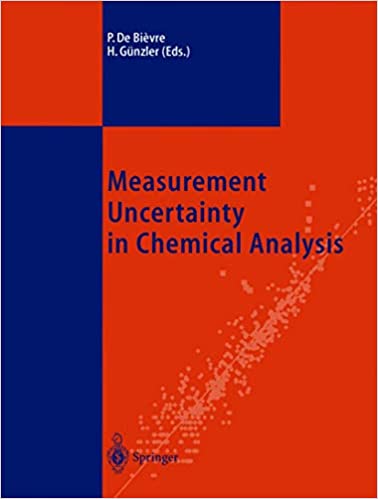Iodometric titration of copper
general remarks
Iodometric determination of copper is based on the oxidation of iodides to iodine by copper (II) ions, which get reduced to Cu+.
Comparison of standard potentials for both half reactions (Cu2+/Cu+ E0=0.17 V, I2/I- E0=0.54 V) suggests that it is iodine that should be acting as oxidizer. However, that's not the case, as copper (I) iodide CuI is very weakly soluble (Ksp = 10-12). That means concentration of Cu+ in the solution is very low and the standard potential of the half reaction Cu2+/Cu+ in the presence of iodides is much higher (around 0.88 V).
In effect reaction taking place in the solution is
2Cu2+ + 4I- → 2CuI(s) + I2
and produced equivalent amount of iodine can be titrated with thiosulfate solution.
For the best results reaction should take place in the slightly acidic solution (pH around 4-5), correct pH is obtained by addition of ammonia and acetic acid, effectively creating acetic buffer. Lab practice shows that the end point is sharper when we add some thiocyanate to the solution. Copper (I) thiocyanate is slightly less soluble than iodide, which makes concentration of Cu+ even lower, increasing the oxidation potential of the Cu2+/Cu+ system.
Solution should be free of other substances that can oxidize iodides to iodine (for example Fe3+ or nitrates).
reaction
As it was already explained, first reaction taking place is:
2Cu2+ + 4I- → 2CuI(s) + I2
This is followed during titration by the reaction of the iodine with the thiosulfate:
2S2O32- + I2 → S4O62- + 2I-
sample size
For 0.1 M titrant and assuming 50 mL burette, aliquot taken for titration should contain about 0.22-0.28 g of copper (3.5-4.5 millimoles).
end point detection
To detect titration end point we will use a standard indicator for iodine titrations - starch. We start with a solution containing relatively high concentration of iodine, so indicator has to be added close to the end point. See iodometric titration end point detection for a more detailed explanation.
solutions used
To perform the determination we will need concentrated ammonia and concentrated acetic acid solutions, solid potassium iodide, titrant - 0.1 M thiosulfate solution, and indicator - starch.
procedure
Procedure below assumes that original solution is acidic or neutral.
- Pipette aliquot containing copper (II) into 250 mL conical flask with a glass stopper.
- Add concentrated ammonia till solution turns dark blue.
- Add concentrated acetic acid till solution loses dark blue color, and then about 3 mL.
- Add 2 g of solid potassium iodide, swirl well.
- Put stopper on the flask and put solution in a dark place for 5 minutes.
- Titrate swirling the flask, until a pale yellow.
- Add 5 ml of the starch solution.
- Add 1 g of potassium thiocyanate.
- Titrate swirling the flask, until blue color disappears.
result calculation
As it often happens in the case of multistage procedures, equation that describes whole process is only an oversimplification of the real procedure. What is important is that it preserves the stoichiometry of the process, so it can be used for the calculation of titration results:
2Cu2+ + 2S2O32- + 2I- → 2CuI(s) + S4O62-
To calculate copper solution concentration use EBAS - stoichiometry calculator. Download determination of copper concentration reaction file, open it with the free trial version of the stoichiometry calculator.
Click button above S2O32- in the input frame, enter volume and concentration of the titrant used. Click button. Read number of moles and mass of copper in the titrated sample in the output frame. Click button in the output frame below copper, enter volume of the pipetted sample, read copper concentration.
sources of errors
Apart from general sources of titration errors, when titrating with iodine we should pay special attention to titrant. Thiosulfate solutions are not stable and they should be standardized every 2-3 months. It is also important to keep the flask closed during the reaction, as iodine is volatile and it can be lost from the mixture. For the same reason titration before indicator is added should be performed reasonably fast. After that iodine concentration is low and there is no need to hurry, although leaving the solution can be still source of serious errors.





